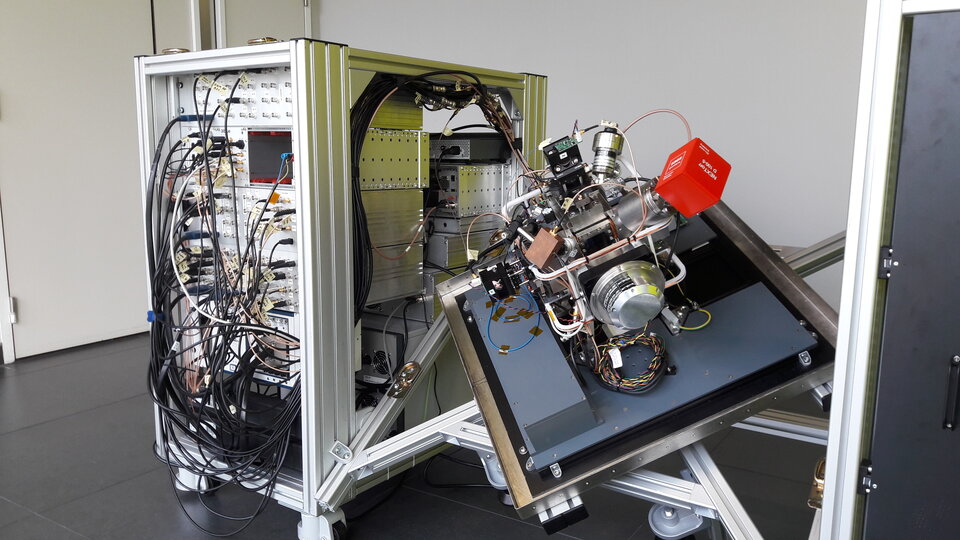ESA’s NAVISP programme – helping to invent the future of European navigation – is probing the science of the very small. The aim is to employ hyper-sensitive quantum technology-based sensors as supplementary navigation solutions, including tracking local variations in gravity that could be matched onto regional and global gravity maps.
Abstract:
Inertial navigation company iXblue is leading a NAVISP project consortium to develop a compact 3-axis CAI sensor, aimed for use aboard boats, aircraft and boats as well as at fixed sites.
This could be used both on a dead reckoning basis – to accurately tote up all subsequent movements relative to its starting point, without the gradually accumulated drift of classical inertial sensors – and also to fix positions, such as by matching local gravity to a detailed gravity map.
The design harnesses the latest micro-electronics and optics, as well as internal correction systems to overcome the harmful effects of external vibration or rotations on the devices.
A weakness of past quantum devices is a post-measurement ‘dead time’ when a new atom cloud needs to be cooled and isolated. The sensor avoids this by incorporating a mechanical accelerometer into its design.
“This hybridisation of classical and quantum sensors serves to increase the dynamic range of the measurements,” comments Baptiste Battelier of CNRS Laboratoire Photonique, Numérique et nanosciences at the University of Bordeaux, participating in the project. “In addition it allows a quantum measurement of the vector acceleration along any random orientation, performed for the first time using a CAI sensor.”




